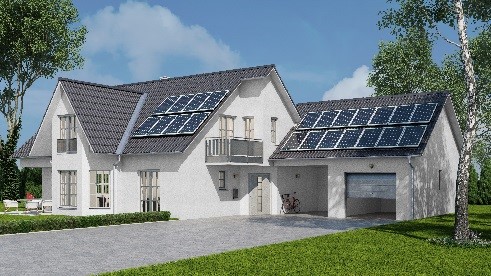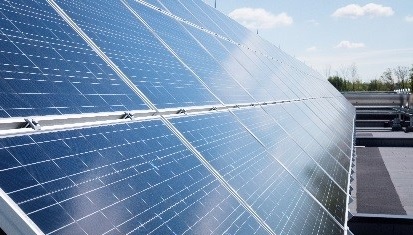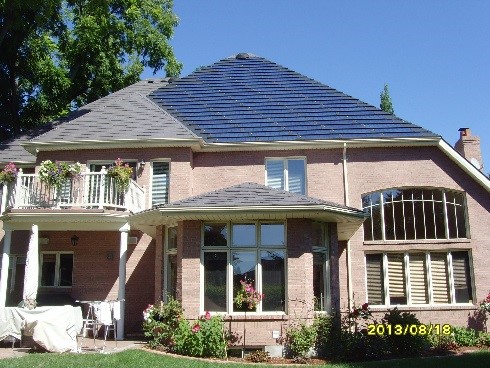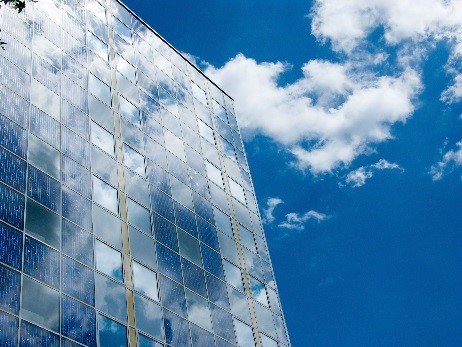Solar Photovoltaic Energy in Buildings
Photovoltaic (PV) systems are used to convert energy from the sun into electricity. They are a safe and reliable source of solar electricity that produces no on-site pollution or emissions. PV systems incur few operating costs and can be installed on any kind of building, such as:
- Residential;
- Commercial;
- Industrial;
- Institutional; or
- Agricultural.
PV systems fall into two main categories — off-grid and grid-connected. The "grid" refers to the local electric utility's infrastructure that supplies electricity to consumers. Off-grid systems are typically installed in remote locations where no utility grid is available. These systems usually require storage, such as batteries, to store the excess electricity generated by the PV system. Energy can be withdrawn from the batteries when the demand exceeds the PV system electricity production. Grid-connected systems can also include storage technologies, but they generally feed any excess electrical energy production to the grid.
In the built environment, photovoltaic systems can be split into two market segments:
- Building-applied photovoltaics (BAPV), where the PV system is added to an existing building (e.g. conventional rooftop applications); and

Figure 1: Residential PV roof (© Shutterstock)

Figure 2: PV roof (© CanmetENERGY-Varennes)
- Building-integrated photovoltaics (BIPV), where the PV system can be included as part of building components to become an integral part of the building skin.

Figure 3: BIPV roof (© SolarShingle Canada)

Figure 4: BIPV façade (© Shutterstock)
The government of Canada has several testing facilities for solar PV in buildings located in Varennes, Quebec, which set the foundation for BIPV research in Canada.
For more information on the technical, economic, environmental and social aspects of photovoltaic systems and examples of PV systems around the world, visit the International Energy Agency Photovoltaic Power Systems Program website. For more resources on solar PV energy in buildings, please visit our resources page, our PV and solar resource maps, and our Q & A’s page.
Q & A's
Q. Can I use PV for heating?
A. Even though it is technically possible, heating with PV modules is not really a viable option. This source of energy is normally used in situations where there is no other way of powering electronic equipment (radio, television), small motors, or lights. Heating is best done using wood, hydrocarbons such as propane or diesel, or other solar technologies specifically designed to collect heat.
Q. Can I use PV modules on my house to reduce my power bill?
A. Connecting solar modules to the power grid is not yet an economically viable option in Canada. However, it is technically feasible and some people choose to do so for personnal or environmental reasons. If you intend to connect your PV system to the electrical grid, you will need to get the authorisation from you local electricity supplier and you will have to meet a number of requirements. Also, net metering is not automatically applicable and must be discussed with your supplier.
Q. How does cold affect the performance of PV systems?
A. Contrary to what one might think, PV cells perform even better at low temperatures. This technology is thus perfectly suited to the Canadian climate. However, other components of a PV system, such as the batteries, may not perform as well in cold weather and may require some protection.
Related links:
Page details
- Date modified: